Media | Articles
The Castle Duesenberg: One historic car that elevated two family legacies
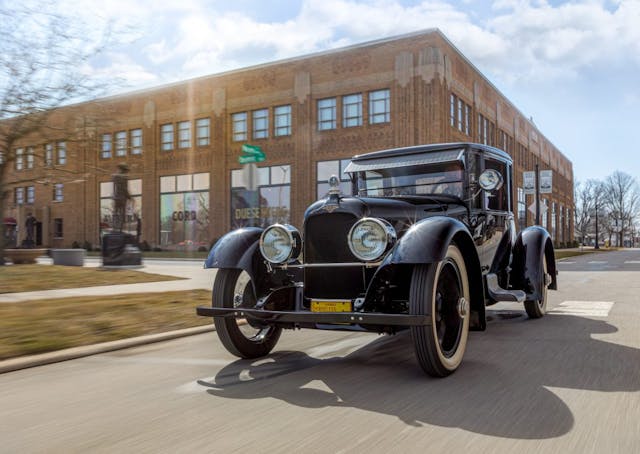
Samuel Northrup Castle was a large man with deep pockets, a huge heart for Hawaii, and big plans for the big island. With a love of automobiles and plenty of means to acquire them, the savvy industrialist was looking for the very best car that money could buy. No one built bigger or better cars in the 1920s than Indiana brothers Fred and Augie Duesenberg.
Appropriately enough—considering the Castle family had amassed wealth and influence on the island with business holdings in everything from rapid transit and gas to sugar—Samuel Northrup Castle was ahead of the curve when he became the proud owner of a 1921 Duesenberg Straight Eight. The very first Duesenberg Straight Eight, in fact.
That gorgeous automobile now resides in the Auburn Cord Duesenberg Automobile Museum, a gift from the Castle family, which owned it for a century. Recently, the Duesenberg became the 27th member of the National Historic Vehicle Register, which was created in collaboration with the U.S. Department of the Interior to recognize and document the country’s most historically significant automobiles, motorcycles, trucks, and commercial vehicles.

Brandon Anderson, executive director and CEO of the Auburn Cord Duesenberg Museum, says the Castle Duesenberg certainly earned its place on the list.
“This is a unique story,” Anderson says in a documentary video, The Castle Duesenberg: Luxury Legend, released by the Historic Vehicle Association. “This isn’t passing down your grandmother’s china. It is the first-ever passenger Duesenberg sold to the public … It’s the epitome of luxury. It’s the finest of the fine. It’s a Duesey.”
Marketplace
Buy and sell classics with confidence
Fred and Augie Duesenberg had already made a name for themselves in the racing community when they decided to start building passenger cars in the late 1910s. The 1921 Duesenberg Straight Eight Coupe—later referred to as the Model A—was the very first.
Castle placed his order in 1919, but Fred Duesenberg, ever the perfectionist, spent so much time perfecting the car’s single-overhead-cam eight-cylinder engine that actual production was delayed for nearly two years. As with other luxury car buyers of the day, Castle purchased the chassis, engine, and suspension from Duesenberg and then sent the car to a custom coachbuilder.
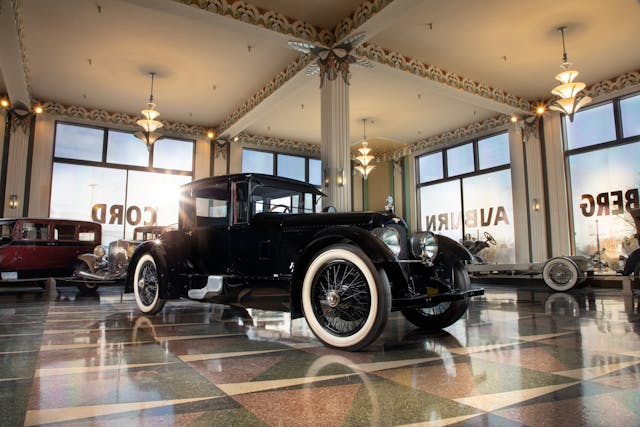
Anderson says the Duesenberg brothers “created a product that no one else could create,” and that kind of exclusivity came with a hefty price tag. He says a Duesenberg “cost about $7000, when at that time you could buy a Model T for about $450.” Including the coachwork, the price could rise to as much as $13,000. That’s about $189,000 today.
Because Castle stood 7 feet tall and weighed nearly 300 pounds, Bender Body Company of Cleveland had to make accommodations for his large frame, which made the car even more unusual.
“The pedals are very far back. The way it sits, the center of the vehicle is very tall,” Anderson says. “It has a look about it that really distinguishes it from other vehicles, especially other Duesenbergs. It’s a very beautiful vehicle—very understated elegance.
“That sweeping rear with the trunk, the high-level windows, and the unique front of the body … all together, composed as one package … it’s unmistakable. There’s no other body like that.”
The Straight Eight was also the first passenger vehicle with four-wheel hydraulic brakes.
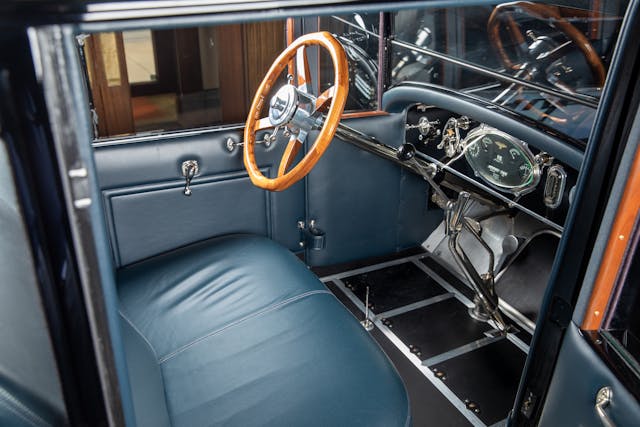
The HVA documentary delves further into Duesenberg’s history beyond the Castle car, telling the story of the automaker’s rise (including E.L. Cord’s involvement and Duesenberg’s best-known model, the Model J and later, the SJ and SSJ) and the company’s eventual fall in 1937.
The Great Depression took its toll, and it’s easy to see why. The automaker was up front about its clientele, which did not include the common man. “Those (people) actually buying these cars would have been politicians, royalty—kings, queens, princesses, princes—(and) some of the more higher-paid Hollywood elite,” says Sam Grate, curator at the Auburn Cord Duesenberg Automobile Museum. “Duesenbergs weren’t built for the 1 percent, they were built for the .1 percent.”
Samuel Northrup Castle died of a heart ailment on February 10, 1959, four days after his 79th birthday. Ownership of the Duesenberg Straight Eight was transferred to Castle’s nephew James Christian Castle, and when James died in 1994, the car went to his son, James Jr. (Jimmy), and his wife CyrAnn. By then, it had been placed in storage and was no longer driven.
CyrAnn Castle, an experience equestrian, discovered it in a barn while riding on the family property, although she didn’t know what “it” was.
“Is that a tractor all covered up in there?” she asked Jimmy.
“No, it’s the family Duesenberg.”
CyrAnn immediately answered, “That has to come out of there.”
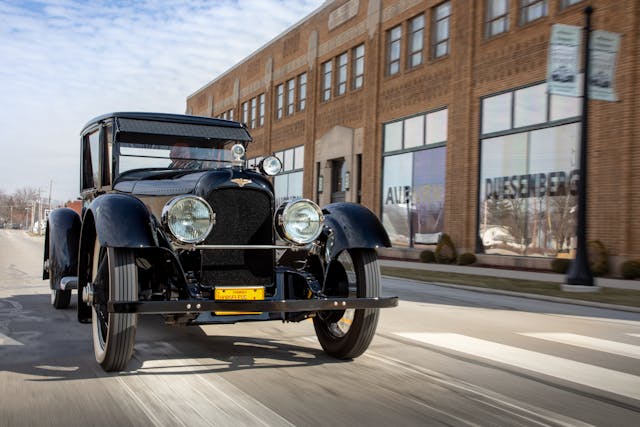
Beginning in 2010, the car underwent a five-year, 10,000-hour body-off restoration to return it to its former glory, a meticulous process that included the use of period-correct tools and processes. It retains most of its original components. “Every part of the process was really well thought out,” Anderson says. “This was not just a restoration to bring it up to current standards, this was a preservation project and restoration project to bring it back to its delivery to Mr. Castle.”
The tedious work paid off, Anderson says. “If you take that vehicle and you marry it to the original 1921 photo, they are identical. It looks like it just walked out of that photo.”

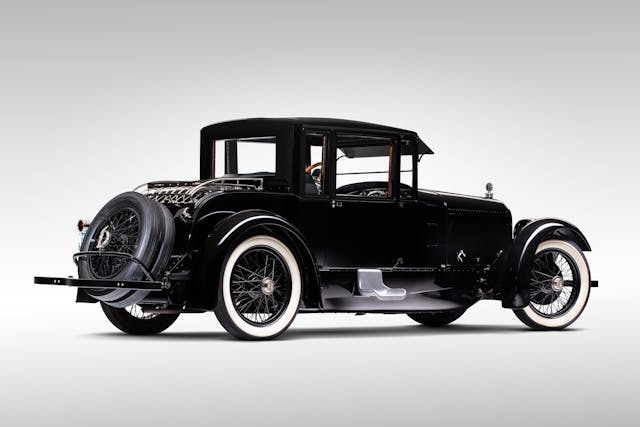
After showing the Duesenberg occasionally over several years, the Castle family decided to donate the car to the Auburn Cord Duesenberg Automobile Museum, where it could be enjoyed by the public.
“There are so many things I love about the car,” Anderson says. “I think it’s what it represents—it’s a family legacy. And being able to tell that story … I’m honored, I’m blessed, because it is so significant.”
Says Grate, “The car left a legacy of telling what a car could be. You could aspire to have the biggest, the greatest, and the fastest … Not only do you have something that’s long and fast and powerful, but you have something that can be elegantly styled—(look) beautiful down the road. Even today, people are inspired by the look and design of Duesenbergs.”
And it all began with this one.



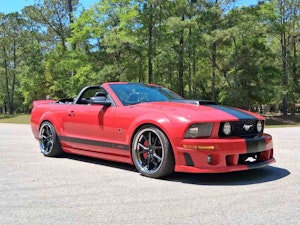









I have no experience with the Model “A” Duesenbergs but this one is special and the story that goes with it is a great one.The last Duesenberg I worked on was an engine rebuild for J528,one of three 4 door convertable sedans built by Herman Brunn in Buffalo,NY. It was an SJ when new as was the one owned by the late Jim Schneck. J528 was owned by Harry Schulzinger when I helped redo the engine with high compression pistons and a rebore to 3.875 and a 5 speed Clark transmission that gave the much needed benefit of overdive in 5th.
There were other Model “J”s in and out of out shop and I am glad for the association with them and their owners.In the early 1950’s these were little more than any other used car then available and most garages wanted nothing to do with them beyond an oil change.Now at 86 I still have clear memories of that time.
Before Harry Schulzinger decided to make a world class road car for himself the engine had been rebuilt at the shop of Thompson&Irwin in 1952 and it ran fine as a stock engine with the 3 speed transmission it came with.This shop also sold English cars,MG,Morris,Jaguar and Riley plus whatever else Max Hoffman brought in
from the wreckage of old Europe after WW2 and at 16 I learned a lot about cars and engines and the Duesenbergs fascinated me and in spite of the intimidating size and appearence it was not hard to figure out how it worked.Two cams and 32 valves and 8 cylinders was not hard to comprehend and still isn’t.
In the early part of 1953 the car came back with instruction to rebore the cylinders to 3.875 and install Jahn’s high compression pistons.Before we got started,Jack Irwin,without permission took J528 from the shop which was now in a bigger building to his inlaws home about 200 miles from Huntington WVa so his wife could visit for a week with her parents.The plan was to stop in Clarksburg WVa and pick up one of Melvin Clemens “J”‘s and I would drive it to the shop in Huntington.Coming down Bridgeport Hill into Clarksburg the engine started
losing oil pressure and heating up and then stopped altogether.It appeared that a valve in #1 cylinder had lost
the “keepers”and fell into the running engine and an examination showed a badly damaged cylinder and water
was in the crankcase.IF that was the case then it was going to happen no matter who was driving or where it was in the country.Jack Irwin had NO part in the second engine remake and it was J467 owned then by Raydon R.(Don)Thompson and was supposedly the “Chicken Shack”car that became notorious in Elbert’s book in 1951.Irwin was using J528 without permission from Mr.Schulzinger.The modifications on J467 proceeded as planned and Don Thompson and I were the ones that did it as well as transferring the body
to another chassis that held a sedan and originally SJ551. The Thompson&Irwin* business dissolved in late 1953 and today a high rise apartment building now sets at 1120 3rd ave.here in Huntington.
We did service other “J”‘s and they were J396-J357-J540 and s few more I have no numbers for.
I m now 87 and am the only one still living that remembers those cars and days,the good,the bad and all in between.I have been to Auburn on several occasions and met Jim Schneck and told him of our work and
was able to help him locate a head for his reproductions.The head came from SJ551 and was defective from
the day it was cast in the Lycoming foundry and the engine was in a DC phaeton that belonged to the now
deceased Harry Van Iderstine.THAT engine now has the head from J155 which was a complete LWB chassis
that lost the body in a fire and belonged to Melvin Clemens.The drive line from the back of the transmission
to the differential and springs may now still reside under J540 because Bill Evans and I removed it and brought it to the barely functioning garage and installed it.Drive shaft under J540 failed and there is a story
to that one that involves a fast night drive and heavy rain storms and flooding and almost not getting home.
I will close now and my contact info is or 1-304-429-2454.
Apparently NO interest in my comments on the Duesenbergs and experiences with them before some of the current owners were born. I will not repeat them in any venue.
Do you mind adding some sources behind Samuel Castle being the owner of a 1921 vehicle? Samuel Castle appears to have died in 1894, nearly 30 years prior to this event?
Yes, it can be a little confusing, especially since there are several Samuel Nrothrup Castles as the family used the name often.
The Samuel Northrup Castle most find online is “our” Samuel Northrup Castle’s father, and his father was also named Samuel Castle.
The SNC that died in 1894, who is the father of our SNC, who lived from February 6, 1880 – February 10, 1959. Both he and his father were a part of Castle & Cooke in Hawaii, which was started by his father that died in 1894 along with Amos Starr Cooke.
This article from Hagerty also links to the documentary that was done on the vehicle with the museum and the Hagerty Driver’s Foundation/Historic Vehicle Association: https://www.hagerty.com/media/car-profiles/the-castle-duesenberg-one-historic-car-that-elevated-two-family-legacies/